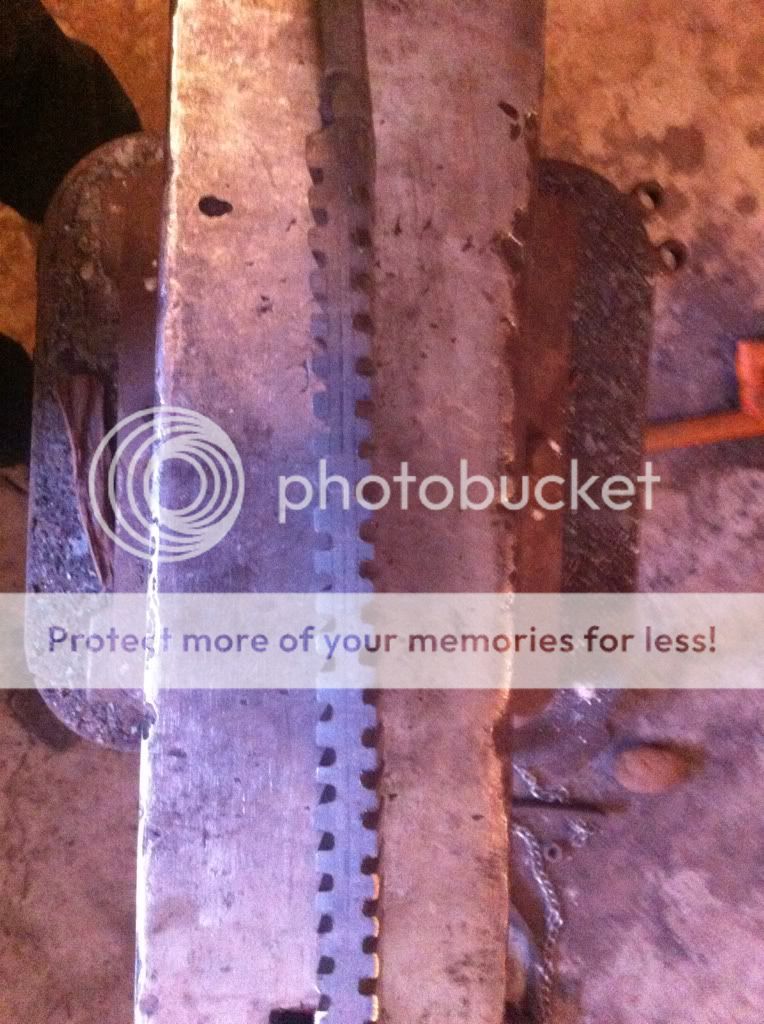I will reinforce JMJones on the hot part.
Welding heat isn't just really red...it is the point where steel will fuse. There are several methods of checking that the billet is ready to weld, but one that works pretty well is to use a length of coat hanger wire. Heat it a bit and dip the end in some flux. Then, when you think the billet is ready to weld, stick the wire in the forge and touch it to the billet. If the billet is at welding heat, the wire will stick to it. If it does not fuse, the billet isn't hot enough.
The second place where new damascus welds go south is forgetting that the WHOLE billet needs to be at welding heat, not just the outside. A full soak at welding heat assures that the center is as hot as the outside. Some folks wait until, the outside corners/edges start to send off sparklers.
The welding forge is not a smelting forge you don't need, or want. It does not need to be at 3000F, just a fully soaked chamber at 2300-2400F.
For those who want to know WHY damascus welds, and then figure the how out more easily:
Welding is done by fusion. In arc welding, the steel is fused by melting a small puddle of it and either fusing the two pieces in the arc, or adding a filler metal.
In damascus, the two metals used are fused by bringing them almost up to the fusion ( melting) point...BUT not quite getting there. Oxygen and oxides must be kept out of the joint, as metal oxides have a much higher melting point than the metals themselves. This is what the flux does.
Once the metal is at near-fusion point, the metals can be joined by adding energy to the junction of the two surfaces. The added energy raises the temperature at this junctions, and causes the two surfaces to fuse ( melt) together in a very shallow weld. This can be done by hammering, squeezing hard in a vise, a flywheel press, or in a hydraulic press. A hydraulic press delivers a very evenly distributed and high amount of energy, and has become the go-to system for production welding. If using a hammer, either by hand or power hammer, it is not how hard the impacts are, but how rapid and evenly they are distributed. It actually takes very little force to bring the 2300F metal into a full surface contact and then have the excess energy go into the boundaries and fuse the metals. Hit it too hard and you add too much energy, raising the temperature above the fusion point into the melting point...and sending molten metal all over the room, or crumbling the whole billet into chunks of would-have-been damascus. If all this energy and boundaries stuff sounds a bit like the metallurgy in HT, that is because it is closely related.
When setting the weld steady and even pressure is what you want. Use light hammer blows that quickly cover the entire surface, starting from the center and working out toward the edges...or a press that covers it quickly and evenly with smooth pressure all over.
Having read that, it is easy to see how cold shuts, flux inclusions, or full blown de-laminations can happen.
The rules to avoid these are simple:
Get it HOT enough
Get the junction CLOSE enough
Get the OXIDES out of that surface junction
Bring the JUNCTION together completely under pressure
Get all that done QUICKLY and EVENLY
Repeat the weld to make sure the above was completely done.

